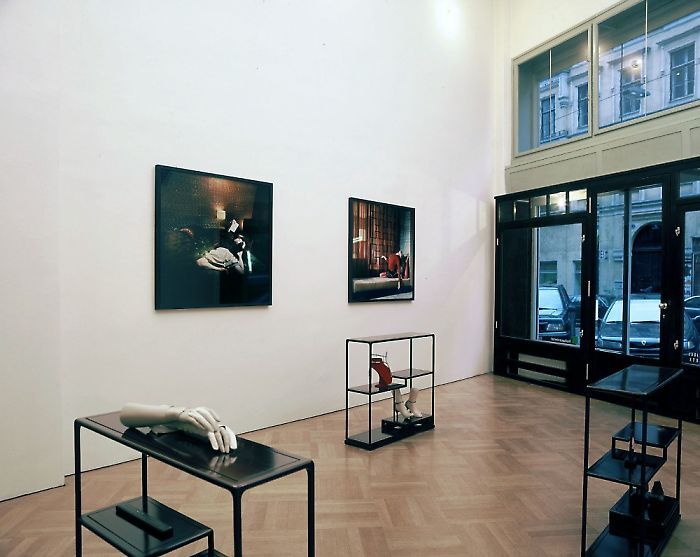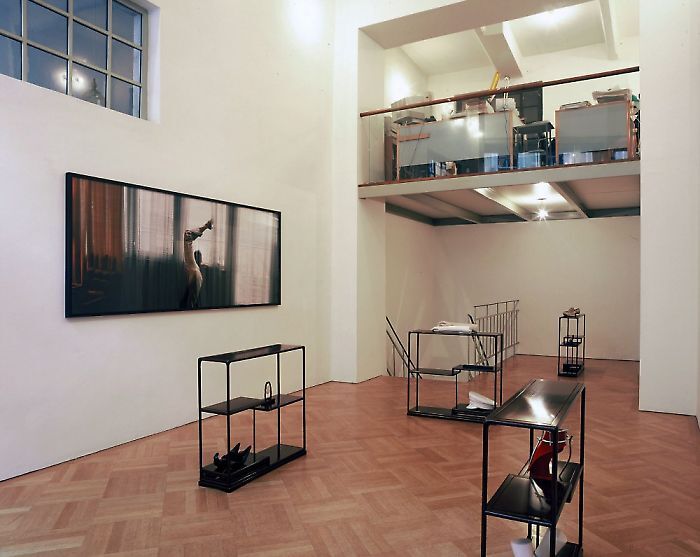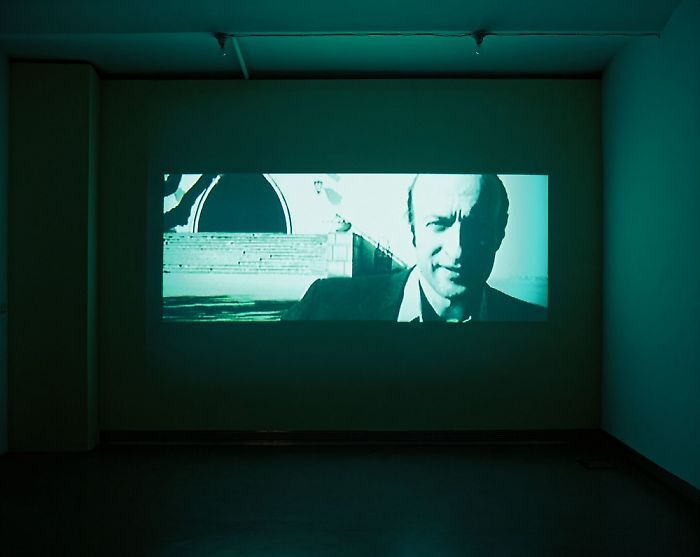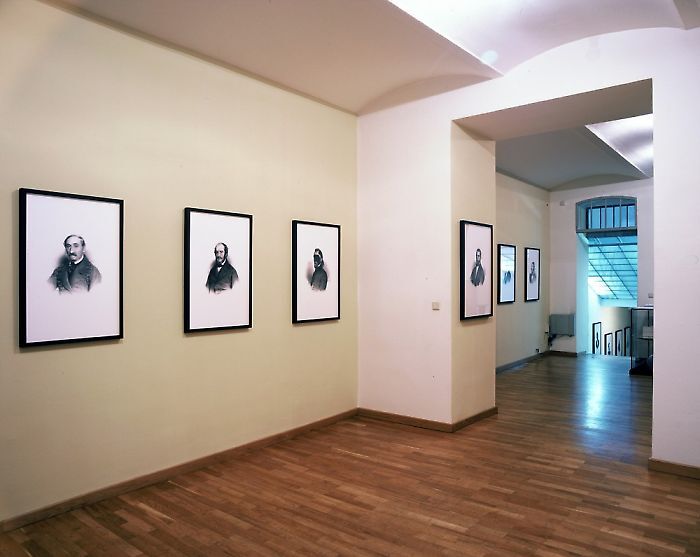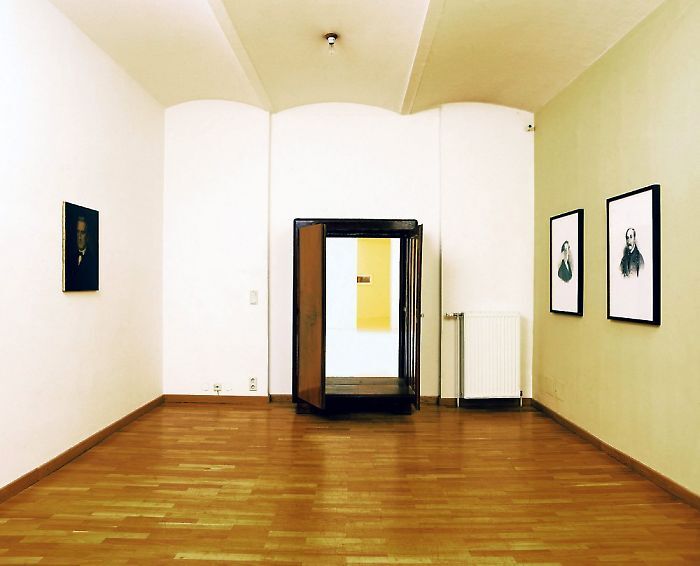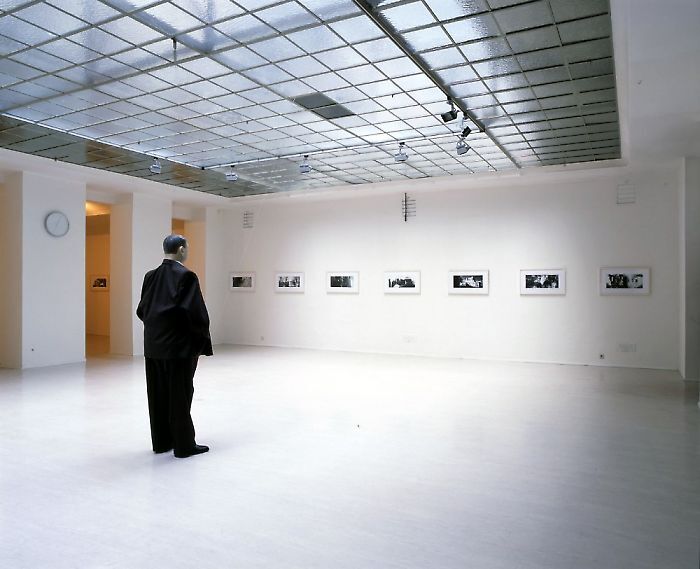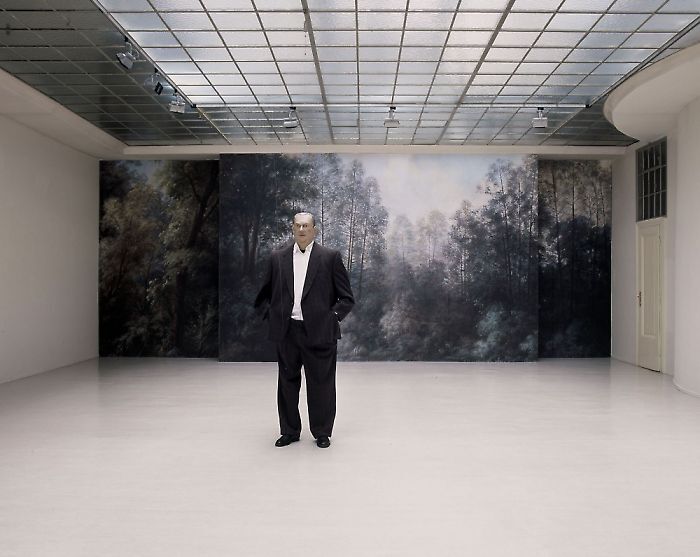—
Markus Schinwald
In his first solo exhibition at gallery Georg Kargl, Markus Schinwald is showing varied works from the past year that are mainly dealing with the cultural history of handling the body.
The French philosopher Maurice Merlau-Ponty once wrote that all perception is irrevocably linked with a condition of embodiment. All that we see is somehow filled with meaning, a concept that is especially charged when it comes to the relationship between bodies. The fact that we inhabit a living body that constrains us, as well a works for us, determines our perception of the world as a whole. We can only experience the world as an embodied being, and thus, the function of the body gives us access to the world. Therefore, it is impossible to relate to a body merely as a thing, not even in a discursive manner.
At the entrance to the exhibition there are four shelves displaying sculptures, fetish objects, performance relics and film props.
The photos, also at the entrance, are some results of a project with acrobats. However, the idea for the project was less concerned with the spectacle of the stage or the circus ring, but rather with the idea that a body, through intense mental focus, can also be contorted. It is as if an extreme psychological condition were to compulse the body into a physical equivalent.
Prostheses for undefined cases
Another form of bodily compulsion is seen in the portraits in the basement: Victorian prints are supplemented with prostheses that have various affects on the human physiognomy. The term „prosthese“ itself cannot be separated from modern cultural process, as Freud introduced this term into the cultural conscious. Cultural discourse makes the artefacts and prostheses not a hindrance to the body, rather, on the contrary, they become the center of it. „It is the logic of the body that creates the prostheses. The body discovers its own technology“ (The Psychopathology of Everyday Life)
In contrast to the previous work is the piece entitled „Diarios“ (to you).
With 160 single stills, „Diarios“ could be thought of as a film. Through the progression of images, the viewer finds primarily American stereotypes translated onto local places in Vienna. While on a visual level a cowboy is conjoined with the Wotruba church or the Holzmeister Crematorium, in the soundtrack we find the intimate interaction between an objective voice (in the form of a screenplay) and an emotional one (in the form of a love poem).
Mobil Standstill
In the last portion of the exhibition, the viewer is confronted with a lifesize marionette that appears to be walking in front of a Trompe L‘ Oeil landscape.
Inquiry
Please leave your message below.
